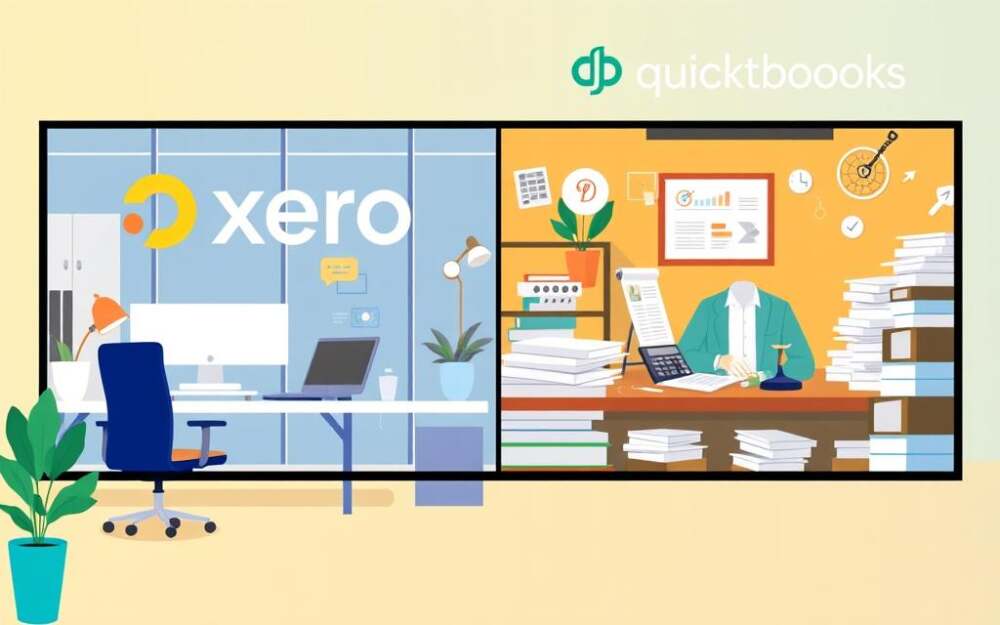Two big names in accounting software are Xero and QuickBooks. They both have a big impact in the market. But how do they compare? This article will look closely at their features, ease of use, cost, and more.
Xero started in 2006 in New Zealand and quickly grew, mainly with small businesses. It’s known for being easy to use and works well with over 1,000 apps. It has a 4.3 out of 5 rating from 1,880 users.
QuickBooks Online, from Intuit, is huge in the U.S. It has about 80% of the market and is known for being reliable. It’s a favorite among accountants for saving time and making customers happy. It has a 4.2 out of 5 rating on Capterra from 3,520 users.
So, if you’re wondering “Xero vs QuickBooks online — which should I choose?” it’s important to know what each offers. Whether you’re a new business looking for something affordable or a bigger company needing more features, choosing the right one can make a big difference in managing your finances.
Key Takeaways
- Xero is great for startups and small businesses because it’s easy to use and has lots of app integrations.
- QuickBooks Online is a big hit in the U.S. for its reliability and making users happy.
- Xero lets you have unlimited users in all plans, which is good for growing teams.
- QuickBooks Online is good for bigger small businesses because it has great invoicing and expense tracking.
- Both use AI to make financial tasks more efficient.
Overview of Accounting Software Options
Choosing the right accounting software is key for a business. It affects financial management and operational efficiency. Xero and QuickBooks Online are two popular options, each meeting different business needs.
Importance of Choosing the Right Software
The right accounting software is vital for a business’s financial health. It offers tools for invoicing, bill payments, and detailed reporting. It also integrates with apps for smooth operation and accurate finances.
Discussions often focus on affordability and functionality. Xero is great for startups and small businesses with its user-friendly interface and unlimited users. QuickBooks, on the other hand, is better for complex businesses with its customizable features and extensive support.
Comparison Overview
| Features | Xero | QuickBooks Online |
|---|---|---|
| Pricing Plans | Early: $13/month, Growing: $37/month, Established: $70/month | Simple Start: $30/month, Essentials: $55/month, Plus: $85/month, Advanced: $200/month |
| Number of App Integrations | Over 800 | Over 650 |
| Product Updates per Year | More than 500 | More than 500 |
| Support Resources | 24/7 online support via email and chat | Live customer service via telephone and chat (limited with Basic plans) |
| Customer Base | Strong presence among small businesses | Over 2 million subscribers |
When comparing Xero and QuickBooks for small businesses, consider pricing, app integrations, and support. Xero is known for its affordability and simplicity, ideal for new businesses. QuickBooks, with its advanced features like inventory management, is better for more complex needs.
Key Features of Xero

Xero has made a big name for itself in the world of accounting software. It’s perfect for small and medium-sized businesses. It’s known for its easy invoicing, detailed inventory management, and smooth app connections.
Invoicing Capabilities
The Xero invoicing capabilities make sending invoices a breeze. You can create invoices quickly, set reminders, and track their status in real-time. It’s easy to customize and send invoices right from the platform.
Inventory Management
Xero’s Xero inventory management is a key feature. It lets businesses keep track of stock levels, set when to order more, and see how stock moves. This helps manage stock well and make smart buying and selling choices. All plans support inventory tracking, but the Established plan has the most features.
App Integrations
Xero has over 1,000 third-party app integrations. This means businesses can customize the software to fit their needs. You can connect it with CRM, ecommerce, time tracking, and email marketing tools. This makes Xero a great choice for businesses that want to link their accounting with other tools.
| Feature | Xero | QuickBooks Online |
|---|---|---|
| Pricing Plans | Early, Growing, Established | Simple Start, Essentials, Plus, Advanced |
| Third-Party Integrations | 1,000+ | 750+ |
| Inventory Management | All Plans | Basic Features |
| Invoicing Capabilities | Robust and Customizable | Standard Invoicing Features |
Key Features of QuickBooks
QuickBooks Online has many features that make it a top choice. It offers tools for invoicing, billing, payroll, and advanced reporting. These features help businesses manage their finances well.
Invoicing and Billing Features
QuickBooks is great for creating professional invoices. You can add updates directly to the invoice. This makes it easy to track and manage your finances.
Payroll Processing
QuickBooks makes payroll easy and efficient. It automates tasks, handles direct deposits, and keeps up with taxes. This integration helps avoid errors and saves time.
Reporting and Analytics
QuickBooks is excellent for reports and analytics. It offers over 80 customizable reports. These reports help businesses track expenses, profits, and inventory, making informed decisions easier.
| Feature | QuickBooks | Xero |
|---|---|---|
| Users | Over 2 million | Nearly 1 million |
| Pricing Plans | Simple Start ($30/mo), Essentials ($60/mo), Plus ($90/mo), Advanced ($200/mo) | Early ($15/mo), Growing ($42/mo), Established ($78/mo) |
| Reports | 80 different customizable reports | Lacking in advanced reporting features |
| Integrations | 750+ pre-built integrations | Over 1,000 third-party integrations |
| Customer Support | Phone and chat support with limited hours | 24/7 online support |
| Security | 28-bit SSL encryption | 99.97% uptime rate |
User Interface and Experience
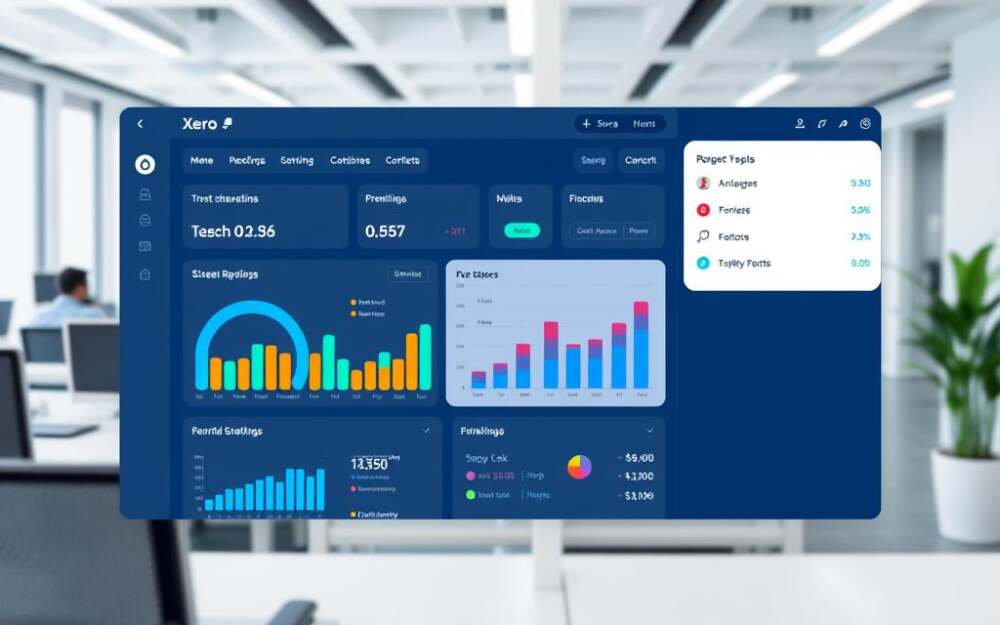
When comparing Xero and QuickBooks, it’s key to look at the user interface and experience. This helps figure out which accounting software fits your business needs best.
Xero’s User-Friendly Design
The Xero user interface is known for its simplicity and good looks. It’s made for beginners, with an easy-to-use design that makes learning quick. Tasks like invoicing and bank reconciliation are easy, helping you manage your finances better.
Xero also shines in its ability to integrate with over 1,000 third-party apps. This lets users tailor their workflow to their business, making it more efficient.
QuickBooks User Accessibility
QuickBooks offers a customizable experience. It might be harder for some to learn because of its traditional design. But, it has powerful tools for detailed financial management.
QuickBooks Online now works with over 650 third-party apps, like PayPal and Shopify. It also has dedicated phone support and different pricing plans. While some find it complex, its strong features and customization options make it a top choice.
Pricing Comparison
When looking at accounting software, price is key. Comparing Xero and QuickBooks pricing helps businesses pick the best choice.
Xero Pricing Structure
Xero has a simple pricing plan with three options:
- Early: Costs $20 a month, perfect for new startups.
- Growing: At $30 a month, it has more features for small businesses growing.
- Established: The top plan at $80 a month, with advanced tools like expense tracking.
Xero stands out by offering unlimited users in all plans. It also includes inventory management and asset tracking in every tier. This makes Xero great for companies looking for affordable inventory solutions.
QuickBooks Pricing Plans
QuickBooks offers a range of plans for different business needs:
- Simple Start: Starts at $30 a month, ideal for solo owners.
- Essentials: Costs $55 a month, adds bill management and time tracking.
- Plus: At $85 a month, it has project tracking and inventory features for growing businesses.
- Advanced: The top plan at $200 a month, with advanced reporting for large businesses.
QuickBooks Online has more features as you go up in tiers. But, it limits users based on the plan, from 1 to 25. QuickBooks also offers live support and a network of experts, which is great for businesses needing help.
Here’s a table comparing the main differences in pricing:
| Plan | Xero Pricing | QuickBooks Pricing |
|---|---|---|
| Lowest Tier | $20/month (Early) | $30/month (Simple Start) |
| Intermediate Tier | $30/month (Growing) | $55/month (Essentials) |
| Highest Tier | $80/month (Established) | $200/month (Advanced) |
| User Access | Unlimited | 1-25 Users |
While Xero and QuickBooks offer different values, businesses should consider their needs and budget. This will help them make the right choice.
Target Audience: Who Uses Each Software?

Xero and QuickBooks serve different business needs. Knowing which one fits your business is key to better financial management and efficiency.
Small Businesses and Startups
Xero is great for startups and small businesses. It’s easy to use, affordable, and handles accounting well. With plans starting at $15 a month, it’s a cost-effective choice for managing finances.
Xero also works with over 1,000 apps, making it customizable. It’s designed for small businesses to manage their finances easily. Many use Jotform with Xero for smooth invoicing and approvals.
| Feature | Xero | QuickBooks |
|---|---|---|
| Number of Users | Unlimited | Up to 25, depending on the plan |
| Integration Capabilities | 1,000+ Apps | 750+ Apps |
| Starting Price | $15/month | $35/month |
Medium to Large Enterprises
QuickBooks is best for big businesses. It offers advanced features and can grow with your business. Starting at $35 a month, it’s designed for complex needs.
Big businesses get custom features like progress invoicing and flexible plans. QuickBooks also helps with taxes and has top-notch invoicing. It tracks finances deeply, perfect for large businesses.
QuickBooks works with over 750 apps, keeping businesses efficient. It also has live chat support, helping with any problems quickly.
Customer Support and Resources

When picking accounting software, customer support and resources are key. Both Xero and QuickBooks offer different ways to help users. Each is designed for their specific users.
Xero Support Options
Xero is known for its vast online resources. Users find video tutorials, a detailed knowledge base, and forums. These forums are great for getting help from others and experts.
But, Xero doesn’t offer direct phone support. This might be a problem for those who need help right away.
QuickBooks Help Resources
QuickBooks, on the other hand, focuses on strong and always-available support. It has a big library of tutorials and a help center. Plus, it offers live customer support.
Users get daily phone support and 24/7 chat. This shows QuickBooks’ commitment to excellent customer service.
Here’s a comparison of the support and resources from Xero and QuickBooks:
| Feature | Xero | QuickBooks |
|---|---|---|
| Online Resources | Extensive tutorials, knowledge base, and community forums | Comprehensive tutorials, help center, and FAQs |
| Phone Support | Not available | Daily phone support available |
| Live Chat | Not available | 24/7 chat support available |
| Email Support | Available | Available |
| Community Forums | Active | Active |
Mobile Application Functionality
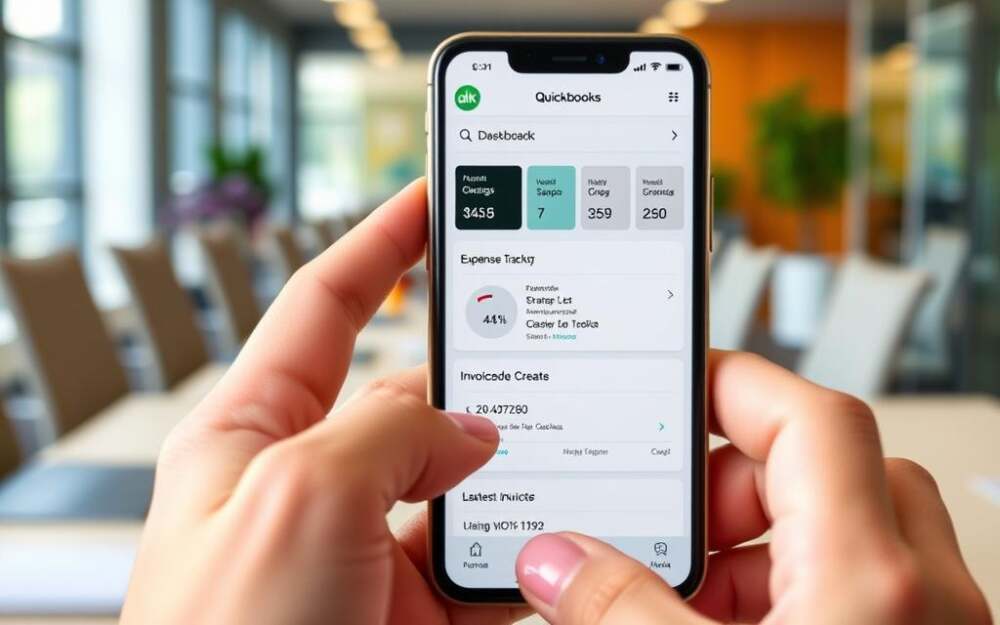
In today’s world, having access to accounting info on the go is key. Both Xero and QuickBooks offer strong mobile apps for this need. This section looks at the Xero mobile app and the QuickBooks mobile features, highlighting their benefits.
Xero Mobile App Features
The Xero mobile app is easy to use and works well with its desktop version. It has many features, including:
- Invoicing: Users can make, send, and track invoices from their mobile.
- Expense Management: You can capture and submit receipts on the go.
- Bank Reconciliation: It’s easy to match transactions with mobile banking.
- Real-Time Updates: You can get the latest financial data anytime, anywhere.
Xero’s app also supports mobile quotes, inventory management, and bank reconciliation. It’s great for small to mid-sized businesses. Xero allows unlimited users across all plans, which is perfect for growing teams.
QuickBooks Mobile Experience
The QuickBooks mobile features bring the desktop version’s power to users on the go. Some key features are:
- Comprehensive Dashboard: Get a quick view of your business’s performance.
- Invoicing and Estimates: Create and manage invoices and estimates from your mobile.
- Receipt Capture: Snap photos of receipts and manage expenses efficiently.
- Time Tracking: Track billable hours directly in the app to make invoicing easier.
QuickBooks has plans for different business sizes, with more mobile features at higher tiers. The QuickBooks mobile features offer many tools, making it good for large firms and enterprises. Users can also get live customer support by phone or chat with premium plans.
| Feature | Xero Mobile App | QuickBooks Mobile Experience |
|---|---|---|
| Invoicing | Available on all plans | Available on all plans |
| Expense Management | Available | Available |
| Bank Reconciliation | Available | Available |
| Time Tracking | Not provided | Available |
| Customer Support | 24/7 support available | 24/7 support available with premium plans |
In conclusion, both the Xero mobile app and the QuickBooks mobile features are powerful. The choice depends on the business’s needs and size. Xero’s app is great for user-friendly invoicing, inventory management, and bank reconciliation, perfect for growing businesses. QuickBooks’ mobile features are best for larger firms needing time tracking and strong customer support.
Security and Compliance

Choosing the right accounting software is key, as it handles sensitive financial data. Both Xero and QuickBooks focus on keeping user information safe.
Xero Security Measures
Xero has strong security features like data encryption and regular updates. It serves users in 180 countries, meeting many international standards. This makes Xero a secure choice for businesses of all sizes worldwide.
QuickBooks Data Protection Efforts
QuickBooks protects business data with advanced security. It uses encryption, secure login, and audits to keep data safe. QuickBooks also follows the latest laws, helping businesses stay compliant with financial rules.
Integration with Third-Party Applications
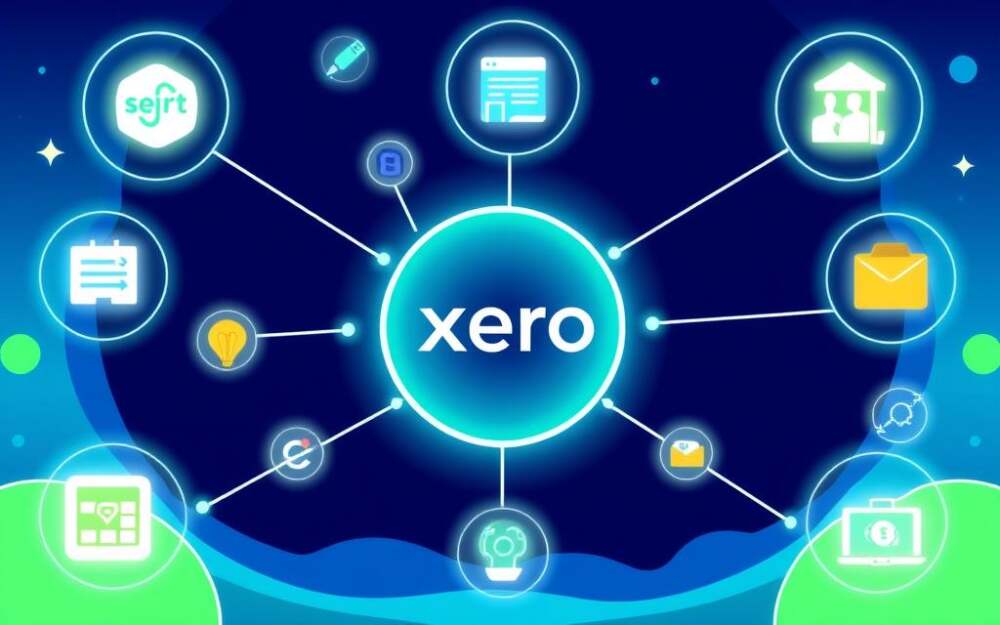
Modern businesses need to integrate with third-party apps to streamline operations. Both Xero and QuickBooks offer many integrations to boost their software. This makes them key for businesses looking to improve their workflow.
Xero Integration Capabilities
Xero stands out by connecting with over 1,000 third-party apps. This makes it easy for businesses to link various tools. It’s great for managing payroll, CRM, e-commerce, and project management.
Xero works well with apps like HubSpot, Shopify, and Gusto. These are top choices for small businesses needing good payroll solutions. Plus, Xero syncs with over 21,000 financial institutions for smooth bank data management.
QuickBooks Compatibility
QuickBooks is known for its wide range of integrations, mainly with U.S. market apps. It connects with Stripe, PayPal, and Square for payment and e-commerce needs. Even though it has fewer integrations than Xero, with over 750 apps, QuickBooks is still a top choice.
Its integrations with popular apps help businesses keep their finances running smoothly. This ensures efficient financial operations with little hassle.
Here’s a comparative overview:
| Feature | Xero | QuickBooks |
|---|---|---|
| Number of Integrations | 1,000+ | 750+ |
| Payroll Integration | Gusto | Intuit Payroll |
| Financial Institution Connections | 21,000+ | 16,000+ |
| Popular App Integrations | HubSpot, Shopify, Gusto | Stripe, PayPal, Square |
Accounting Report Generation

Creating detailed accounting reports is key for any business to stay on top of finances. Both Xero and QuickBooks have strong reporting tools. They are top picks in the accounting software world.
Types of Reports in Xero
Xero offers many customizable report options. You can easily make cash flow statements, profit and loss reports, and balance sheets. Its business snapshot feature is a highlight, showing key business metrics in one place.
This is great for startups and small businesses. They get a simple interface and detailed reporting.
QuickBooks Reporting Features
QuickBooks reports have advanced tools for deep business analysis. It includes features for detailed financial reports like income statements and sale summaries. These can be adjusted to fit what users need.
QuickBooks also has built-in payroll, time tracking, and client network tools. This makes it perfect for growing businesses needing advanced financial reports.
| Feature | Xero Reporting | QuickBooks Reports |
|---|---|---|
| Cash Flow Statements | Yes | Yes |
| Profit & Loss Reports | Yes | Yes |
| Balance Sheets | Yes | Yes |
| Business Snapshot | Yes | No |
| Customizable Reports | Highly Customizable | Available for Some Plans |
| Built-in Payroll & Time Tracking | Via Gusto Integration | Yes |
Xero offers flexible and detailed reporting for all business sizes. QuickBooks provides detailed financial analysis tools for bigger businesses with specific needs.
User Reviews and Feedback
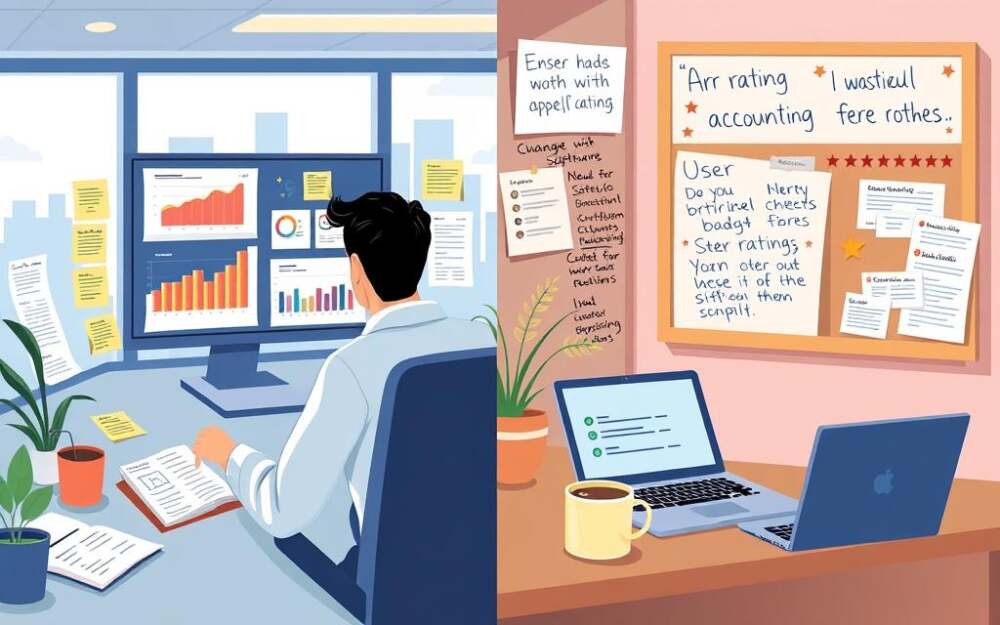
User reviews are key when choosing accounting software. Xero and QuickBooks have gotten lots of feedback. Xero is praised for its ease of use and AI, while QuickBooks is known for its features and U.S. support.
Common Praise for Xero
Startups and tech entrepreneurs love Xero. It’s easy to use and has great customer service. Users say Xero’s best features are:
- Simplified bank reconciliation that works well with bank feeds.
- Superior AI for transaction suggestions, making data entry easy.
- Unlimited users with no additional fees, which is cost-effective.
- Customizable reporting templates, so businesses can tailor their reports.
User Critiques of QuickBooks
QuickBooks gets praise for its detailed reports and features. But, some find it too complex and pricey. Key points from user critiques are:
- Extensive features, which can be overwhelming for small startups.
- Additional costs for each new user, which can be a problem for small businesses.
- Complicated color scheme for bank reconciliation, which some find hard to use.
- Rigid reporting templates, which limit customization.
| Aspect | Xero | QuickBooks |
|---|---|---|
| User Interface | Simple and intuitive | Feature-rich but complex |
| AI Capabilities | Advanced | Standard |
| Customer Support | Community-based support | Strong U.S.-based support |
| Scalability | Unlimited users | Additional fees per user |
| Customization | Customizable report templates | Limited reporting templates |
Both Xero and QuickBooks have their strengths. Xero is great for tech-savvy entrepreneurs because it’s easy to use and customizable. QuickBooks is better for those who need detailed reports and traditional accounting features.
Local vs International Presence
When looking at Xero and QuickBooks, we must consider both local and global aspects. This helps match their reach with our business goals and plans for growth.
Xero’s Global Reach
Xero started in New Zealand in 2006 and has grown into a big name worldwide. It has over 3 million users in more than 180 countries. Its design is simple and flexible, fitting many businesses.
With over 800 apps to connect with, Xero is great for companies working across borders. This makes it perfect for businesses that operate globally.
QuickBooks in the U.S. Market
QuickBooks was launched by Intuit in 1983 and is a big hit in the US. It’s known for its wide range of apps and support from many accountants. Over 3.4 million businesses use QuickBooks Online.
CPAs recommend QuickBooks to over 90% of their clients. It helps with managing money, creating invoices, and handling payroll. This makes it a key tool for businesses in the US.
Ease of Migration and Setup
Switching to new accounting software can seem daunting. But, both Xero and QuickBooks have made the process easier. Here’s a detailed comparison to help you decide.
Transitioning to Xero
Xero was founded in 2006 and is a top cloud-based accounting solution. It’s loved by accountants and bookkeepers for its advanced features. Xero has made the migration process smooth and hassle-free.
Businesses looking to switch to Xero will find great resources and support. Here’s what they offer:
- Partner Services: Xero works with services like Jet Convert to make data transfer easy.
- Comprehensive Guides: There are step-by-step guides and video tutorials to help with the migration.
- 24/7 Customer Support: Xero provides support through email, phone, and live chat, ensuring help is always available.
Moving from QuickBooks
QuickBooks has been a key player in accounting software since 1983. It’s designed to be easy for small business owners to use. QuickBooks offers many tools and resources to make setup simple.
- In-depth Guides: There are detailed guides and documentation for setting up and migrating to QuickBooks Online.
- Import Tools: QuickBooks has easy import tools to quickly bring in data from other software.
- Direct Support: You can get personalized support through phone, email, and live chat. QuickBooks also has a marketplace of ProAdvisors for complex tasks.
Both Xero and QuickBooks aim to reduce downtime and ensure a smooth transition. Whether you’re moving from QuickBooks or switching to Xero, these giants offer the tools and support for a successful setup.
Conclusion: Making the Right Choice
Choosing between Xero and QuickBooks depends on your business’s needs. Xero is known for its easy design, project management, and growth. QuickBooks shines with customizable reports, payroll, and expense tracking.
Key Takeaways for Users
When deciding between Xero and QuickBooks, think about what matters most to your business. Xero starts at $9 a month, great for small businesses. It has over 800 add-ons and supports projects and multiple currencies.
QuickBooks Online starts at $25 a month, fitting larger businesses with payroll and detailed tracking. Xero has over 2 million users, known for its user-friendly design. QuickBooks is big in the U.S., helping small to medium businesses with finance tracking.
Final Recommendations on Xero vs QuickBooks
If you need a simple platform for invoicing and reports, pick Xero or QuickBooks based on your financial needs. Xero is perfect for straightforward tools with easy integrations and a free trial. QuickBooks is great for businesses needing detailed financial solutions, like inventory and payroll.
Both offer good mobile apps, so you can manage finances anywhere, anytime.
FAQ
What are the main differences between Xero and QuickBooks?
Which accounting software is better for small businesses?
How do Xero and QuickBooks compare in terms of pricing?
Which software provides better customer support?
Are there any differences in mobile app functionality between Xero and QuickBooks?
How do Xero and QuickBooks handle security and compliance?
Which software is easier to integrate with third-party applications?
What types of reports can I generate with Xero and QuickBooks?
What do user reviews and feedback say about Xero and QuickBooks?
Thomas Steven is a 15 Years of experience digital marketing expert. He covers all things tech, with an obsession for unbiased news, reviews of tech products, and affiliate deals. With his experience, Thomas helps consumers choose what and how to buy from evaluating products by features, ease-of-use, cost-effectiveness or customer care allowing them to make intelligent purchasing decisions in the dynamic world of technology.

